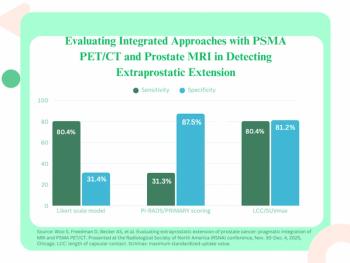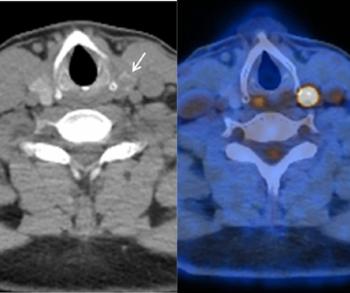
CT Colonography Tops List for Non-Invasive Advanced Neoplasia Targeting
Compared with stool-based non-invasive screenings, CT colonography performs best for colorectal cancer screening and detection.
Research supporting CT colonography’s (CTC) efficacy continues to grow – new research published Friday revealed that it is the most effective non-invasive colorectal cancer (CRC) screening test for identifying advanced neoplasia (AN).
In a study published March 12 in the
They found that CTC, with a threshold of at least 10 mm, does the best job at targeting AN and preserving detection while reducing unnecessary colonoscopies.
“The relative prevalence of advanced adenomas is more than 10 times greater than that of invasive cancer in a typical screening population,” said first study author Perry J. Pickhardt, M.D., chief of gastrointestinal imaging in the UW radiology department. “The purpose of this study was, therefore, to conduct a systematic review and meta-analysis of the published literature…for comparing center prevention and detection with mt-sDNA, CTC, and FIT.”
With CRC as the second-leading cause of cancer death nationwide, detecting pre-symptomatic, early-stage cancer is critical to a patient potentially having a better outcome. Optical colonoscopy (OC) is great for detecting and removing advanced benign neoplasms and invasive cancers, but for primary CRC screening, it is extensive and resource-heavy.
For more widespread population-based screening, though, CTC, mt-sDNA, and FIT perform differently, varying in cost, safety, and patient acceptance. CTC differs from the two stool-based tests in that it provides information based on size, morphology, and location of detected polyps rather than delivering a binary test result that uses a pre-determined threshold without offering details behind any positive outcome.
Pickhardt’s team wanted to know which non-invasive method had the best test-positivity rate (TPR) for pinpointing advanced adenomas – those of at least 10 mm in size that contained villous histology or high-grade dysplasia or any high-risk serrated lesion at least 10 mm in size or containing dysplasia. They also looked at cancer detection (CD) rates and positive predictive value (PPV).
For their study, the team conducted a systematic review of 10 mt-sDNA, 27 CTC, and 88 FIT studies that included 25,132; 33,493; and 2,355,958 patients, respectively. To determine TPR that leads to OC, they used meta-analysis with hierarchical Bayesian modeling.
Based on their overall analysis, Pickhardt said, CTC with threshold of at least 10 mm (CTC10) yielded substantially lower colonoscopy resource utilization. Both FIT and mt-sDNA had similar performance and low positivity thresholds.
Overall, the team said, CTC10 most effectively targets AN, has a low OC referral rate and a higher PPV than the other non-invasive screening options. In addition, they said CTC is at least 90-percent sensitive for large adenomas, outperforming both mt-sDNA and FIT as they detect less than half of these lesions, and it can allow opportunistic screening for osteoporois, aortic disease, sarcopenia, and other conditions.
Still, all of these non-invasive screening options offer benefits to patients, they said.
“Compared with primary OC screening, all of these less invasive tests reserve the invasiveness and potential complications of endoscopy for the small minority of positive referrals,” they said. “This limits the need for needles, pain and sedation medications, a separate driver, higher costs, and extended recovery time.”
The team did note that their study only focused on asymptomatic patients and only considered one-time screenings with each test, preventing the evaluation of repeated testing. Additional work is also needed to consider the costs associated with each study to pinpoint which test option might be most appropriate for patients.
“In the end,” they said, “the ‘best’ test may be the one that the patient is willing to undergo.”
Newsletter
Stay at the forefront of radiology with the Diagnostic Imaging newsletter, delivering the latest news, clinical insights, and imaging advancements for today’s radiologists.




























